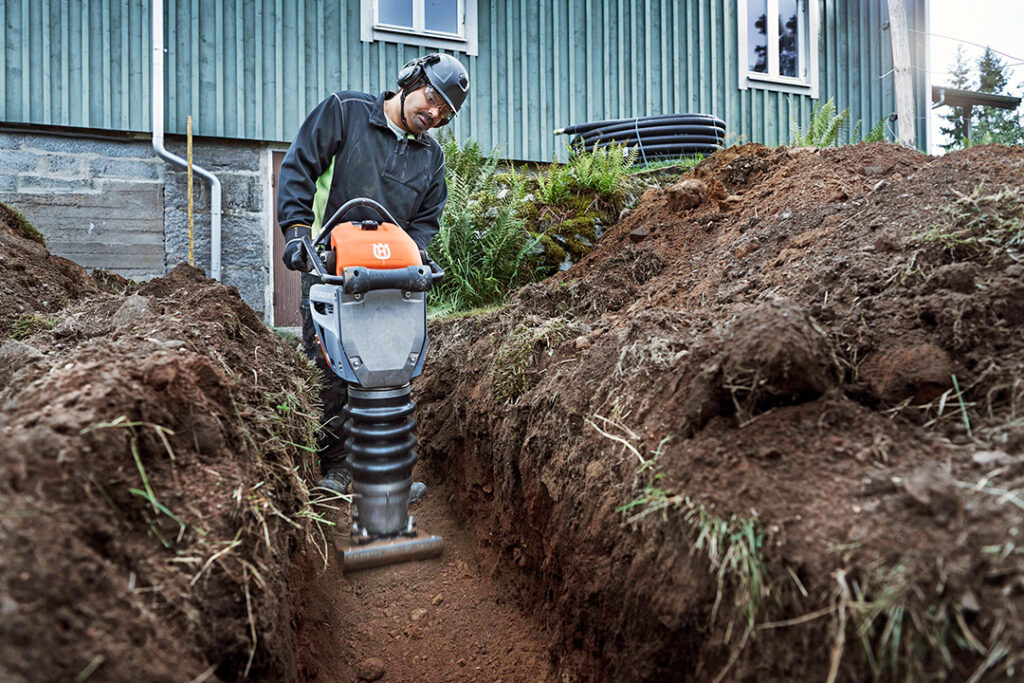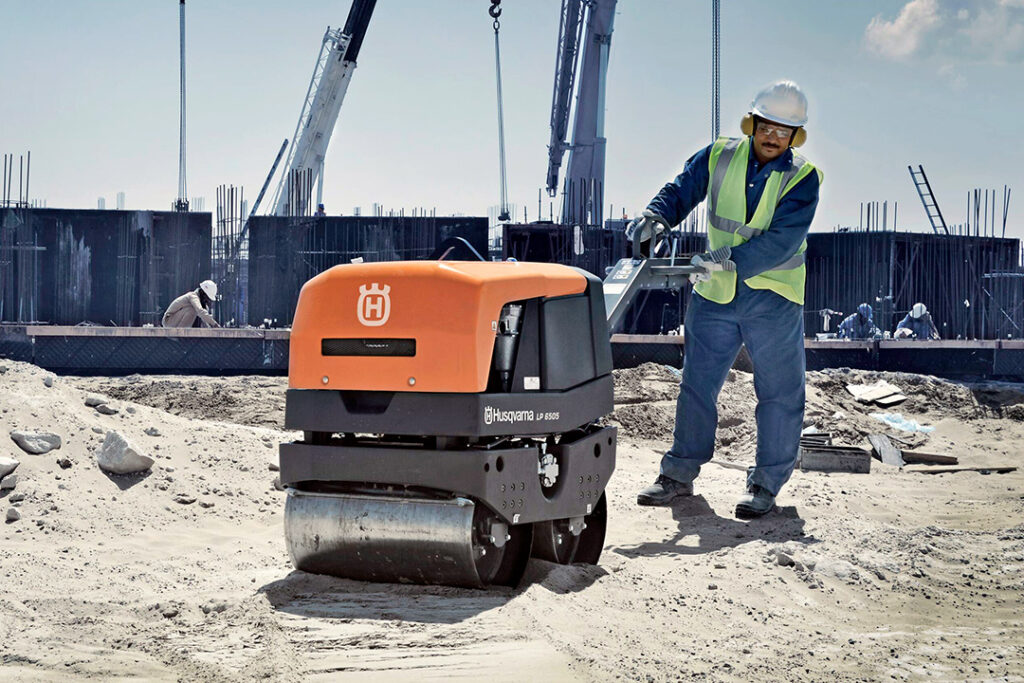A complete guide to compaction
Contractors in Zimbabwe always face tight deadlines and budgets. We all know that extending deadlines results in added expenses, so choosing dependable and renowned compaction equipment is vital. High-quality compaction guarantees the stability and durability of infrastructure, but the choice of machine is heavily influenced by the kind of substrate.
Compaction is determined by the substrate
The way that these materials react to compaction forces can vary, so you need to understand your substrate before choosing the right machine.
- Clay – Clay can be difficult to compact due to its sticky, small particles. Significant impact force and kneading action are usually needed to reach the right density.
- Silt – Also needs to be carefully compacted, despite being less cohesive than clay due to its medium-sized particles. Vibratory compaction works well.
- Rockfill – The larger, irregular pieces of stone require heavy-duty equipment that can apply a lot of impact power.
- Sand – This is easily compacted by vibratory means because of its relatively homogenous, non-cohesive particles.
- Gravel – Similar to sand but with larger particles, gravel reacts well to vibratory compaction. However, greater particle sizes may call for heavier equipment.
- Asphalt – A bitumen and aggregate mixture requires particular methods. Pneumatic, vibratory or static rollers are commonly used for compaction of asphalt.

Compaction techniques
There are three main methods of compaction: static, vibratory, and impact.
- Impact compaction delivers high-impact force by repeatedly dropping a heavy weight onto the ground. For compacting cohesive materials like clay and rockfill, this method works well.
- Vibratory compaction uses a vibrating plate or drum to transfer energy into the substrate, which causes the particles to reorganise and solidify. This approach is well-suited for granular materials like sand and gravel.
- Static compaction compresses the substrate using the machine’s weight. When a smooth, level surface is required for asphalt, this method is often used.
Sometimes, the best results are obtained by combining different compaction processes. For instance, total density can be increased by using a tamping rammer to precompact a layer of clay before applying a vibratory roller. Similarly, density and smoothness can be obtained on asphalt by first using a vibratory roller and then a static roller. The particular substrate and project needs determine the best combination of processes.

Tips and guidelines
The following tips will help you choose the most appropriate machinery and improve the quality of the work:
- Appropriate moisture content – The substrate’s moisture content is essential for efficient compaction. This can be hampered by either too much or too little moisture. Test the moisture content and make the necessary adjustments.
- Layer thickness – In general, compacting thin layers works better than compacting thick ones. As a result, the compressed material can have a more consistent density.
- Number of passes – The ultimate density is influenced by the number of passes the compaction machine performs over the substrate. Although there is a limit of diminishing returns, more density is typically achieved with more passes.
- Machine choice – Choose the best machine based on the project’s needs and the particular substrate. Poor compaction and expensive rework can result from using a machine that is too small or unsuitable.
- Maintenance – For optimum performance and longevity, construction equipment needs routine maintenance. Observe the lubrication and maintenance guidelines provided by the manufacturer. Cutting Edge also has servicing dealers nationwide.
- Operator Training – Achieving high-quality compaction requires operators who have received the necessary training. Make sure operators are aware of the machine’s capabilities and the appropriate methods.
- Testing and inspection – To make sure the compacted material satisfies the necessary density requirements, test and inspect it regularly. A density gauge or another testing method can be used in this situation.
- Weather – Compaction should not be done in extremely dry or wet conditions, as this may affect the outcome.
With centuries of experience and a stellar reputation for dependability and quality, Husqvarna is a brand that provides a range of compaction equipment that is tailored to the exacting requirements of contractors. Rollers, tamping rammers and plate compactors are all available under the Husqvarna brand, and these machines are designed to function exceptionally well and endure the demands of building sites.
Cutting Edge is the supplier of Husqvarna construction equipment in Zimbabwe and we give local contractors the assurance they need to achieve excellent and long-lasting results. Our After Sales team can handle all of your maintenance requirements and ensure your compaction equipment is kept in good working order. To find out more about our range of construction machinery, please contact us today.
___
Cutting Edge is the leading supplier of Husqvarna, GARDENA and Hunter products in Zimbabwe. We bring you the best tools in the business with world-class service and after sales care. Follow us on Facebook and Instagram for the latest news and product offerings from our brands.

